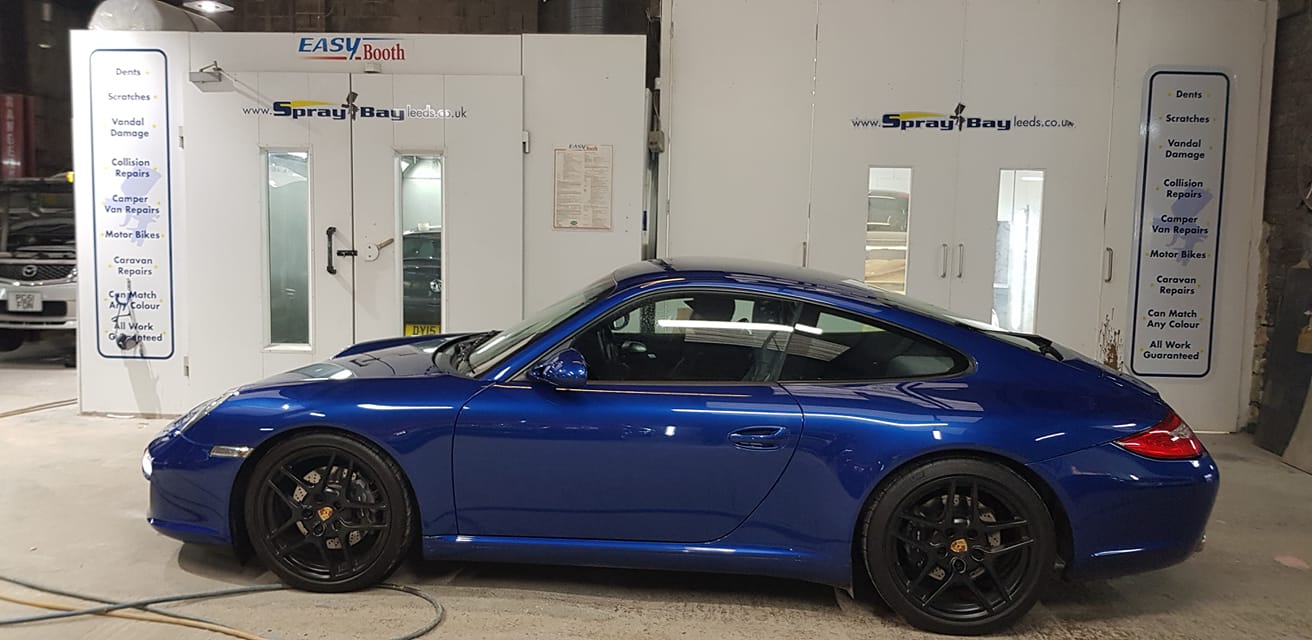
15 Aug Car Paint Repair Process Explained
When car paint gets damaged, perhaps as a result of a vehicle scuff, or small accident, a layer of the paint is worn off.
The amount of paint worn off depends on the force exerted on it. Sometimes, you can get lucky and only the clear coat gets damaged. In this case, small scuffs and scratches can often be machine polished out with good results.
If, however, scratches and scuffs go through the clear coat (a tell-tale sign of this is if colour has been taken away, or raw metal or plastic is showing) then the paint will need refinishing to bring it back to a factory standard.
Spot repairs
Damage and defects in car paint can sometimes be repaired using a spot repair. This technique involves masking around the damaged area and working on the damaged area exclusively. The bad paint is sanded down to the raw metal or plastic, primed, and repainted to blend it into the rest of the paintwork.
You might have heard of companies performing ‘smart paint repairs’ and this is the process they use. While never perfect (because you are adding new paint to old) it’s possible to create a good cosmetic finish. Key to the success of such a repair is the paint colour, quality and skill of application. A DIY job this is not.
Respraying panels
Sometimes, it may not be possible to do a spot repair on a body panel, or the damage may just be too severe. If a car body shop determines this to be the case, they will recommend a complete panel respray to bring it back to new.
Respraying a car body panel involves removing the panel if possible (in the case of a bumper, bonnet, or trim) or bringing the vehicle into a spray-painting booth and masking off the body except for the panel in question.
Sanding is performed to remove the old paint from the panel so the technician can see what they are working with. If the raw material underneath is damaged, a high-quality filler will probably be used to fill it and then sanded down to create a flat surface. The panel will then be primed and painted, using the colour code of the car.
Detailing and polishing
Scratches and scuffs that have only damaged the clear coat can be polished out using a rotary polishing machine and a cutting compound. You start with an abrasive grit and work your way up finer grits, before using a polishing compound and pad. This technique is called detailing and it will return a car back to new condition.
While anyone can have a go with machine polishing, professional results are only achievable through experience. The car also ideally needs to be indoors, so no external elements can affect the process. Working indoors also enables one to use high discharge light to monitor the paint and check results properly.
Even if machine polishing is only needed for one panel on a car to remove scuffs and scratches, it’s recommended to have the whole car polished. Otherwise you will have one very glossy panel and all the rest will be imperfect.

No Comments